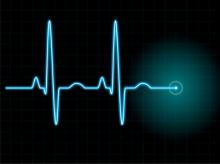
Youth sports health and safety best practices include the recommendation that each athlete, regardless of age or level of competition, undergo a thorough exam by a licensed health care provider before participating in organized sports. The pre-participation physical evaluation (PPE) is the primary means of identifying athletes at risk of sports injury and initiating preventative measures
The main objective of the PPE is to not just to detect life-threatening conditions such as congenital heart defects, or disabling medical conditions, such as a history of concussions, but to screen athletes for medical or musculoskelatal conditions that may predispose them to injury or illness and effect sports participation, such as asthma or the female athlete triad.
Parents need to understand, however, that the ability of PPEs to detect the kind of cardiac abnormalities that can predispose athletes to sudden cardiac death is limited.
In fact, the American Heart Association admits that screening by history-taking and physical examination alone (without non-invasive testing such as an electrocardiogram or ECG) is insufficient to guarantee detection of many critical cardiovascular abnormalities in large populations of young athletes. Although ECG screening has not yet become routine in the United States, a 2014 study suggest that it has a lower false positive rate than taking a cardiac history and physical exam (the current standard of care), and improves detection of the congenital heart conditions putting athletes most at risk of SCA.
No National Standard
There a number of problems with PPEs, however, primarily because national standards do not exist, and the PPE is often incompletely and inconsistently performed.
- A 2014 study found that only 23 state athletic associations (46%) mandate a single form, and only 8 (North and South Dakota, Missouri, Indiana, Tennessee, Georgia, Virginia, and Delaware) (16%) use a form consistent with the Pre-Participation Physical Evaluation Monograph 4th Edition (PPE Monograph) endorsed by six national medical societies.
- Using 2010-2011 athletic participation numbers furnished by the National Federation of State High School Associations, an estimated 4.1 million high school athletes receive PPEs without the use of a mandated statewide form to ensure a standardized PPE evaluation, and only 867,700 use the PPE Monograph. The result is that only 11% of US high school athletes are guaranteed to receive a PPE that is fully consistent with the PPE Monograph.
- Only 37% of physicians in Washingon State were aware of the PPE Monograph. A lack of a standard form (52%) and time with patient (56%) were reported by the physicians as the chief obstacles to the use of the PPE, although physician awareness of the monograph reduced the perception of obstacles. 95% supported the adoption of a single statewide PPE form.
- The person allowed to perform a PPE also varies from state to state: 21 states allow a PPE to be conducted by a nurse or physician's assistant; and 11 states allow chiropractors to perform a PPE.
- A PPE is often not a requirement for those participating in club-based or youth sports.
Experts advise parents to make sure that whoever performs their child's PPE asks the right questions even if they aren't required.
Goals and Objectives
A PPE has the following goals and objectives:
- Meet legal [every state requires a PPE before participation in interscholastic sports], insurance or club mandates.
- Maintain and promote health and safety of athlete in training and competition by:Identifying conditions that may limit participation or predispose an athlete to injury, disability, or (in rare cases) death
- Evaluating overall fitness (the examiner may recommend a conditioning/strengthening program);
- Treating current injuries, and preventing future injuries (such as overuse injuries)
- Help athletes to participate safely, not to disqualify them from competition. Studies show that only 0.3 to 1.3% of athletes are denied clearance as a result of a PPE.
- Educate athlete on variety of health topics (time constraints often limit the opportunity for education)
- Give athlete chance to discuss health goals as they relate to their own athletic performance



